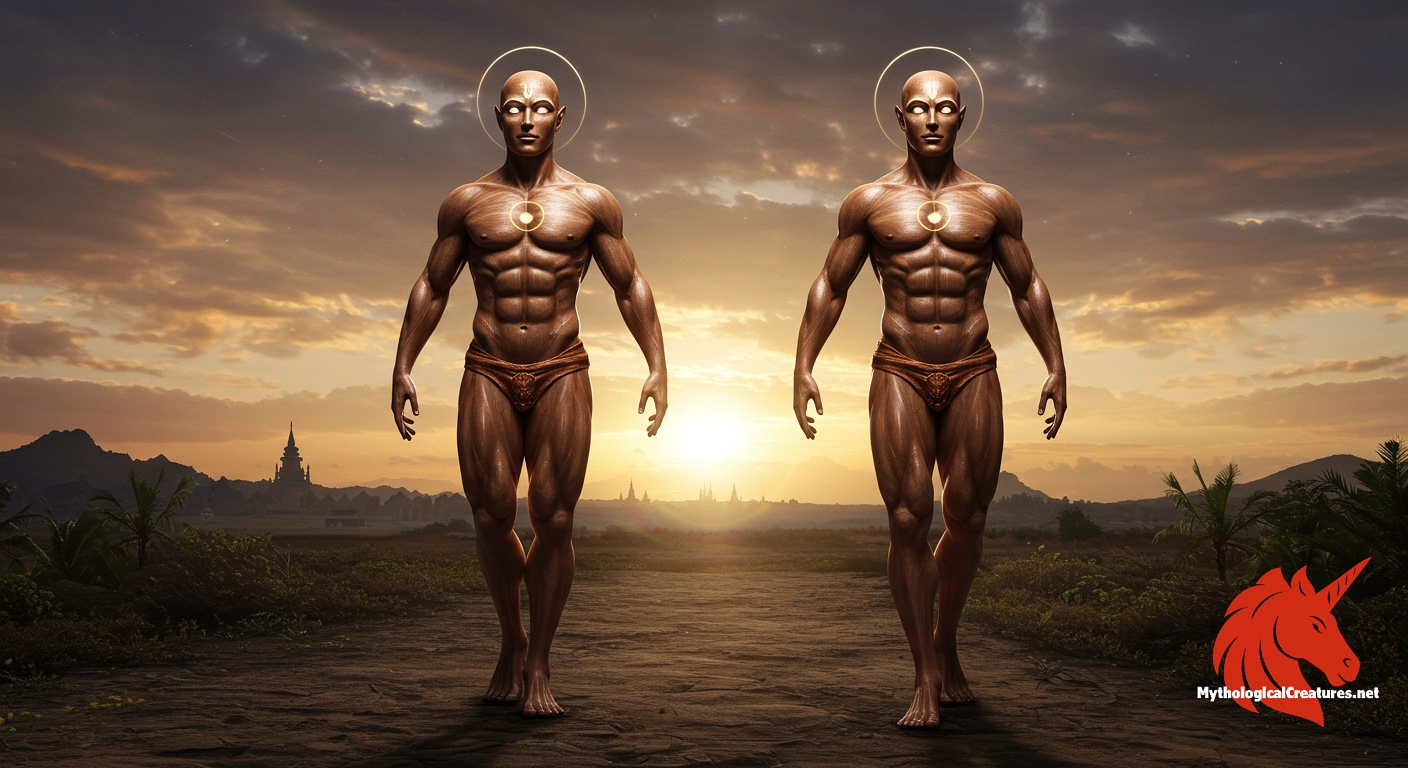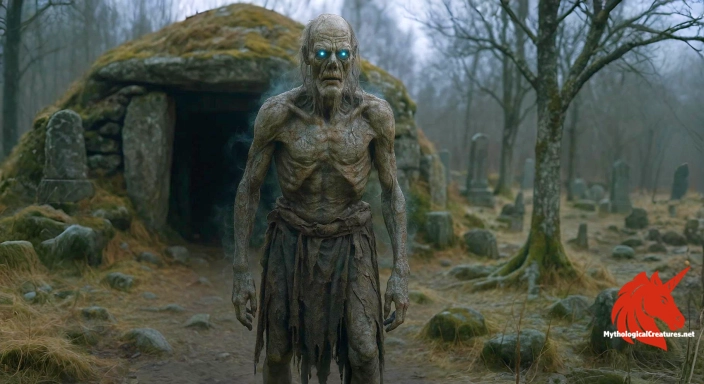Ashvins: The Ashvins are Hindu twin gods associated with medicine, health, and the dawn.

Ashvins
Ashvins - Highly revered for their healing, protection, and role in cosmic order as divine twin gods.
Origins & First Encounters
The Ashvins emerge as one of the most captivating figures in Hindu mythology, embodying the energy and promise of dawn. Their origin is steeped in ancient Vedic tradition, where they were celebrated as youthful, dynamic twin deities whose very name signifies 'horse possessors'. Born from the cosmic brilliance of the sun god Surya and his consort Sanjna, they occupy a unique space in the divine hierarchy. Their presence in the ancient hymns of the Rigveda speaks to a time when the interplay of nature and divinity was vividly personified through heroic imagery. Manifesting as twin horsemen riding chariots drawn by incessantly vigorous horses, they symbolise both rescue and rejuvenation. Their role as beneficent guardians who aid in times of distress has been echoed in countless mythological narratives. The narrative of the Ashvins carries the weight of both healing and scientific wisdom, bridging the realms of physical well-being and celestial order. Over time, their myth has evolved while retaining a resonance that continues to inspire reverence and artistic admiration across the ages.
Source Texts & Tale Variants
The ancient hymns of the Rigveda provide the earliest literary attestations of the Ashvins, celebrating their swift and nurturing interventions in the lives of mortals. Their divine narrative is further elaborated in the epic Mahabharata, where the lineage of the heroic twins Nakula and Sahadeva is intricately linked to them. Multiple Vedic texts and later scriptures furnish varying details about their genealogy and divine exploits, often accentuating their role as luminous healers and rescuers. Certain fragments of Upanishadic literature hint at their esoteric connection to the science of life and medicine. Oral traditions and regional retellings have added a layer of local flavour to their canonical portrayals, imbuing their legend with a sense of immediacy and intimacy. Narrative variations sometimes explore their interventions during cosmic battles, reflecting a wider symbolic engagement with forces of chaos and order. Through the prism of different textual traditions, the Ashvins have been reimagined as both compassionate benefactors and formidable cosmic agents. The enduring diversity of their stories demonstrates how ancient myth can adapt to new contexts while retaining its intrinsic power.
Form & Powers
The visual representation of the Ashvins is marked by their striking identical features and an aura of perpetual youth. Artistic depictions often reveal them as radiant and finely contoured figures, imbued with an almost otherworldly vigour that mirrors the first light of dawn. Their expressions, brimming with both determination and serenity, reflect a balance between dynamic action and calm benevolence. Clad in celestial garments that suggest both movement and splendour, they project an image of divine beauty that has captivated devotees for millennia. The chariots they command, drawn by horses of unyielding stamina, accentuate their role as swift messengers who traverse the skies with impeccable grace. Variations in sculpture and painting sometimes bring subtle differences in style, yet the core imagery remains that of magnetic, twin forces of nature. The interplay of light and shadow in their portrayals offers a symbolic reflection of the interplay between healing and mortality in human life. This harmonious blend of physical splendour and transcendental symbolism makes the Ashvins enduring icons of divinity and hope.
Regional Faces
Across the vast cultural landscape of ancient India, the Ashvins have taken on local characteristics that highlight their universal appeal. In certain northern traditions, they are revered not only as divine healers but also as celestial patrons of fertility and agricultural abundance. Southern folklore often casts them in the role of guardians, whose presence marks the transition from night to day, lending a protective blessing to communities at the break of dawn. Temple carvings and mural paintings in various regions have adapted their iconography to mirror local artistic customs and religious sensibilities. In some remote villages, oral narratives imbued with local superstition recount how the twin deities intervened to restore balance during times of natural calamity. Regional festivals dedicated to the early morning light frequently invoke their names, affirming their continuing importance in community life. Such local variants underscore how the universal themes of healing and regeneration can be tailored to reflect diverse cultural values. Thus, while the core mythology remains consistent, the Ashvins have always been malleable figures, shaped by the rich tapestry of regional belief and practice.
Cultural Parallels
The duality of the Ashvins finds resonances in numerous mythological traditions around the world, inviting a fascinating comparative discourse. Their portrayal as twin deities closely mirrors the storylines of the Dioscuri or Castor and Pollux in Greek mythology, both of which embody the ideals of brotherhood and celestial guidance. Like these Western counterparts, the Ashvins are celebrated for their timely interventions and their role as mediators between the divine and mortal realms. The thematic emphasis on healing and rescue also draws parallels with various healing gods found in other Indo-European cultures. Their balanced representation of physical dynamism and calm benevolence enables a dialogue with similar mythological figures, such as certain twin spirits in Nordic lore. This cross-cultural affinity underscores a shared human fascination with the motif of duality and the mysteries it encapsulates. The comparative study of such figures enriches our understanding of how ancient cultures perceived the interplay between fate, recovery, and cosmic order. Ultimately, the Ashvins serve as a bridge, connecting the rich mythological traditions of the East with the broader spectrum of twin deities revered in cultures around the world.
Legacy & Modern Evolution
The evolution of the Ashvins over the centuries offers a compelling narrative of myth adapting to changing cultural landscapes. Their early Vedic depiction as dynamic healers gradually broadened as later texts and regional festivals embraced their symbolisms of rejuvenation and medical wisdom. Through medieval poetry and devotional literature, the Ashvins transitioned from abstract divine figures to more tangible benefactors whose blessings could be felt in everyday life. Today, they are often invoked in modern reinterpretations of traditional medicine and holistic healing practices, thus preserving an ancient connection between spirituality and health. Contemporary artists and writers reimagine their twin energy through diverse mediums, ensuring that the myth remains vibrant amidst modern narratives. Their legacy is also evident in the way cultural rituals continue to celebrate the transformative power of dawn, making them symbols of hope and renewal. Despite shifts in religious practice and urbanisation, the enduring appeal of the Ashvins underscores their timeless resonance. Their influence persists not only in religious observance but also in the broader cultural imagination, where ancient myth continues to inspire modern reinterpretations.
Interesting Fact
An interesting aspect of the Ashvins is that despite their divine status, they remain intimately involved in human affairs, particularly in the realms of healing and rescue, bridging the gap between the mortal and celestial worlds.
Quick Creature Info
Associations:
Our Mythic Legendary Rating:

Also Sometimes Known As:
Habitat:
Supernatural Powers:
Physical Attributes:
Abilities:
Behavior:
Lore:
Related Creatures, Tales or Lore
- RRomulus and Remus (Roman twin founders)
- CCastor and Pollux (Greek Dioscuri)
References
Discover Another Mythical Legend You May Not Have Heard Of?
Uncover the mysteries of ancient folklore and expand your knowledge of legendary beings from cultures around the world.
Dare to Meet the Draugr....
Curated by the Mythological Creatures Team (rev. May 2025)
